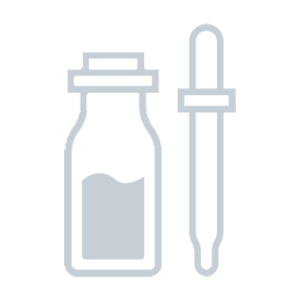Comparison between Pilgrim Zit Zapper Anti-acne Gel vs. Minimalist AHA 25% + PHA 5% + BHA 2%
- 35 components -
- 21 components -
Find out which product is better for your skin.
Ingredients in both products 6
Glycolic Acid, Ethylhexylglycerin, Propanediol, Salicylic Acid, Phenoxyethanol and 1 more. Show all.
Components only in Pilgrim Zit Zapper Anti-acne Gel 29
Water, Niacinamide, Butylene Glycol, Phellodendron Amurense Bark Extract, PEG-60 Hydrogenated Castor Oil and 24 more. Show all.
Uniqueness: 82.9%
Components only in Minimalist AHA 25% + PHA 5% + BHA 2% 16
Aloe Barbadensis (Aloe Vera) Leaf Juice, Lactic Acid, Propylene Glycol, Gluconolactone, Mandelic Acid and 11 more. Show all.
Uniqueness: 76.2%
Face to Face
Components position by position
1
Water
1
Aloe Barbadensis (Aloe Vera) Leaf Juice
2
Niacinamide
2
Glycolic Acid
3
Butylene Glycol
3
Lactic Acid
4
Phellodendron Amurense Bark Extract
4
Propylene Glycol
5
Glycolic Acid
5
Gluconolactone
6
PEG-60 Hydrogenated Castor Oil
6
Mandelic Acid
7
Salix Alba (White Willow) Bark Extract
7
Dimethyl Isosorbide
8
Rehmannia Chinensis Root Extract
8
Sodium Hydroxide
Show others
Positive Effects
Find out what good effects the product has
Both products provide the following effects: Antioxidant, Moisturizing, Cleansing, Acne fighting, Softening, Soothing, Anti-aging, Lightening, Lifting, Rejuvenation, Antiseptic, Deodorant, Tones up skin, Anti dandruff, Hair conditioning, Hair structure improvement, Hair growth stimulating
Effects unique for Zit Zapper Anti-acne Gel:
Pore Shrinking, Elasticity improvement, Antifungal, Regeneration, Hair gloss, Hair protectionEffects unique for AHA 25% + PHA 5% + BHA 2%:
UV Protection, Healing, Nutrifying, Hair follicle nutrition-- Show more --
ECO Metrics
Find out how eco-friendly the components are
Vegan
No
No
Cruelty free
No
No
Reef safe
Yes
Yes
Ozone layer safe
Yes
Yes
Organic score
natural
13 out of 35
37%
chemical
15 out of 35
43%
natural
6 out of 21
29%
chemical
13 out of 21
62%
Concerns
Pay attention to this information
-- Extra information --
Components by Skin Type
Find out what components are good or bad for your skin type
Dry skin
Positive: 3Negative: 0
Butylene Glycol#3Glycine Soja (Soybean) Seed Extract#12Glycerin#25
Oily skin
Positive: 2Negative: 0
Glycolic Acid#5Salicylic Acid#18
Sensitive skin
Positive: 0Negative: 4
Glycolic Acid#5Salicylic Acid#18Citric Acid#23Melaleuca Alternifolia (Tea Tree) Leaf Oil#34
Dry skin
Positive: 2Negative: 0
Propylene Glycol#4Sodium Hyaluronate#13
Oily skin
Positive: 2Negative: 0
Glycolic Acid#2Salicylic Acid#9
Sensitive skin
Positive: 0Negative: 3
Glycolic Acid#2Lactic Acid#3Salicylic Acid#9

